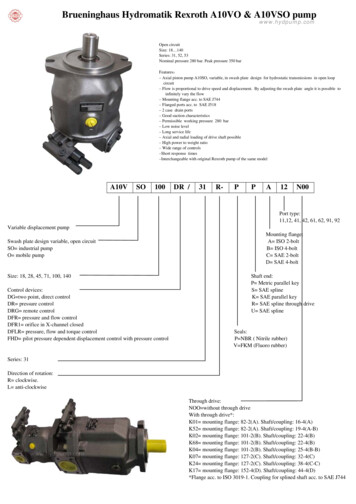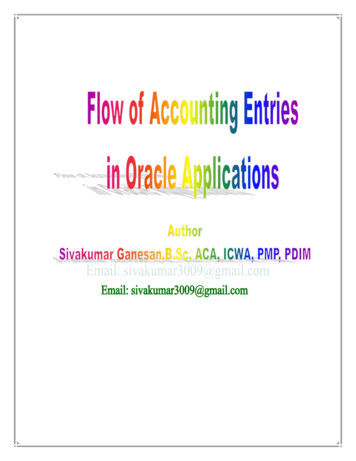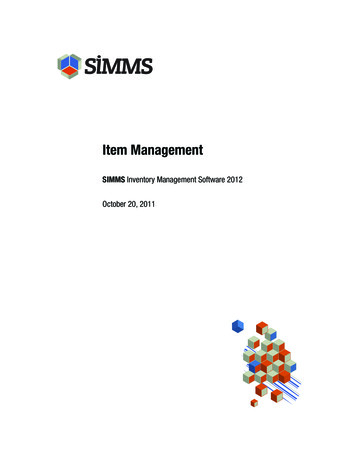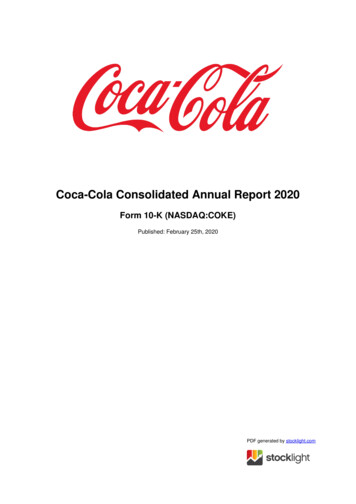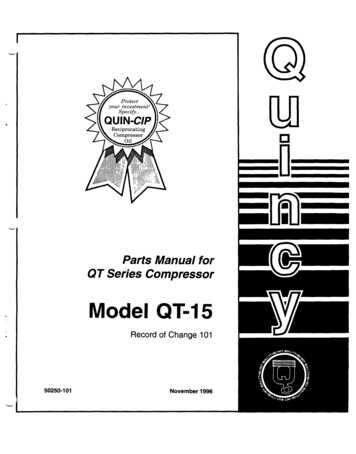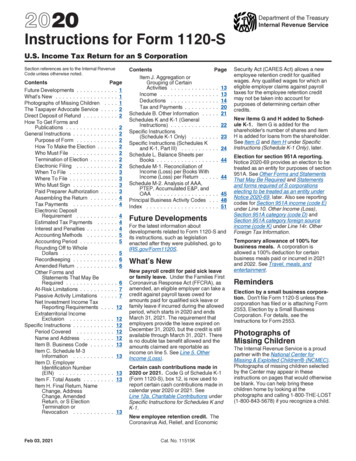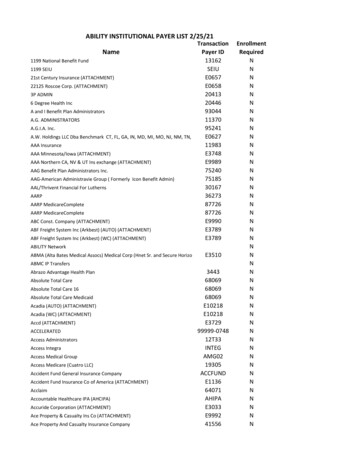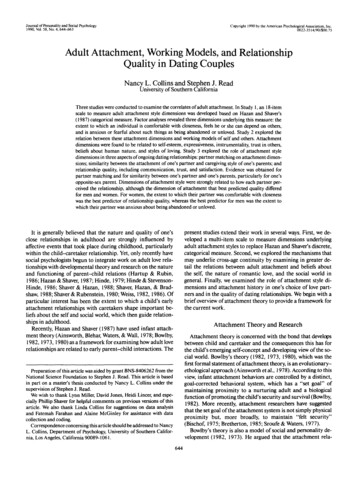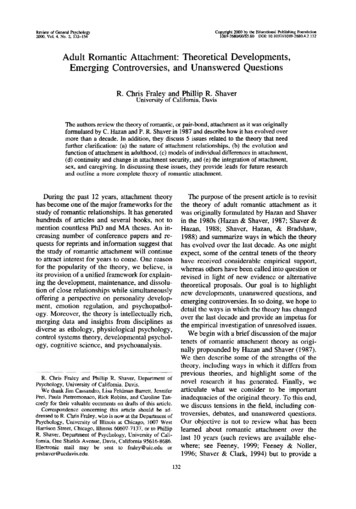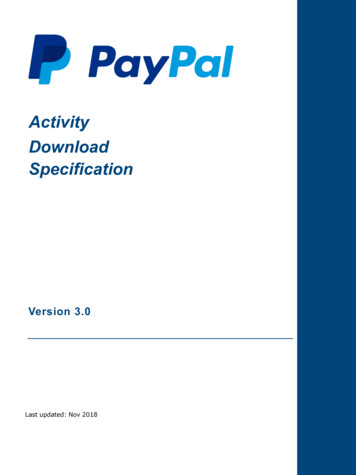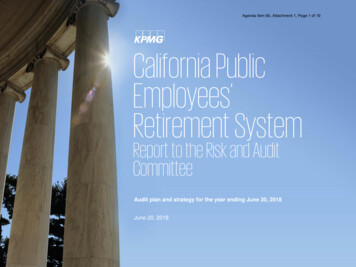
Transcription
Agenda Item 8b, Attachment 1, Page 1 of 19California PublicEmployees’Retirement SystemReport to the Risk and AuditCommitteeAudit plan and strategy for the year ending June 30, 2018June 20, 2018
Agenda Item 8b, Attachment 1, Page 2 of 19AgendaClient service teamScope of servicesObjectives of an auditResponsibilitiesMateriality in the context of an auditRisk AssessmentKPMG’s audit approach and methodologyFocus areasKPMG independence quality controlsRecent developments in accounting and financial reportingKPMG’s Audit Committee Institute (ACI) 2018 KPMG LLP, a Delaware limited liability partnership and the U.S. member firm of the KPMG network of independent member firms affiliated with KPMG InternationalCooperative (“KPMG International”), a Swiss entity. All rights reserved. NDPPS 5610982
Agenda Item 8b, Attachment 1, Page 3 of 19Client service teamLisa AvisManaging DirectorJohn HubbeBrock RomanoLead Engagement PartnerEngagement QualityControl Review PartnerKPMG Subject Matter ProfessionalsNancy ValleyAccount ExecutiveSubject MatterProfessionalsLeadership SupportGASB/Pensions/OPEBPERSAssetManagementJane LettsNancy RoseIT rPartnerPartnerBridgett GyorfiLead Audit Senior ManagerCharita ManansalaAsset ManagementManagerBrianne Wiese/Kristan LivingstonSite Visits rSenior AssociatesKPMG AssociatesPartnerDVBE 2018 KPMG LLP, a Delaware limited liability partnership and the U.S. member firm of the KPMG network of independent member firms affiliated with KPMG InternationalCooperative (“KPMG International”), a Swiss entity. All rights reserved. NDPPS 5610983
Scope of servicesAgenda Item 8b, Attachment 1, Page 4 of 19Scope of services- Audit of Comprehensive Annual Financial Report (CAFR) and GASB 68 and 75 Specified ElementsDeliverables- Independent Auditors’ Report on CAFR- Independent Auditors’ Report on Internal Control over Financial Reporting and on Compliance and OtherMatters (required under Government Auditing Standards)- GASB 68 and 75 reports on Specified Elements- Report to the Risk and Audit Committee (Required communications at the conclusion of the audit)- Management comments and recommendation letterTimeline- Planning – ongoing- Fieldwork – now through December 2018- Final Financial Reporting - CAFR – October 31, 2018- Issuance of the report - CAFR – November 2018- GASB 68 and 75 reports – December 2018 2018 KPMG LLP, a Delaware limited liability partnership and the U.S. member firm of the KPMG network of independent member firms affiliated with KPMG InternationalCooperative (“KPMG International”), a Swiss entity. All rights reserved. NDPPS 5610984
Agenda Item 8b, Attachment 1, Page 5 of 19Objectives of an audit— The objective of an audit of the financial statements is to enable the auditor to express an opinion aboutwhether the financial statements that have been prepared by management with the oversight of the Risk andAudit Committee are presented fairly, in all material respects, in conformity with generally accepted accountingprinciples in the United States of America (U.S. GAAP).— We plan and perform the audit to obtain reasonable, rather than absolute, assurance about whether thefinancial statements taken as a whole are free from material misstatement, whether due to fraud or error.— Our audit includes:- Performing tests of the accounting records and such other procedures, as we consider necessary in thecircumstances, based on our judgment, including the assessment of the risks of material misstatement, toprovide a reasonable basis for our opinion.- Evaluating the appropriateness of accounting policies used and the reasonableness of significantaccounting estimates made by management, and evaluating the overall presentation of the financialstatements.— Audit performed in accordance with applicable audit standards:- Generally Accepted Auditing Standards in the United States of America (U.S. GAAS)- Government Auditing Standards (GAS) 2018 KPMG LLP, a Delaware limited liability partnership and the U.S. member firm of the KPMG network of independent member firms affiliated with KPMG InternationalCooperative (“KPMG International”), a Swiss entity. All rights reserved. NDPPS 5610985
Agenda Item 8b, Attachment 1, Page 6 of 19ResponsibilitiesManagementresponsibilities –Financial statements— Fairly presenting the financial statements, including disclosures in conformity with U.S. GAAPManagementresponsibilities –ICOFR— Design, implementation, and maintenance of internal control relevant to the preparation and fair presentation offinancial statements that are free from material misstatement, whether due to fraud or error— Adjusting the financial statements to correct material misstatements and affirming in the representation letter that theeffects of any uncorrected misstatements aggregated by the auditor are immaterial, both individually and in theaggregate, to the financial statements taken as a wholeManagement— To provide the auditor with:responsibilities – Other(1) access to all information of which management is aware is relevant to the preparation and fair presentation of thefinancial statements, such as records, documentation, and other matters;(2) additional information that the auditor may request from management for the purpose of the audit; and(3) unrestricted access to persons within the entity from whom the auditor determines it necessary to obtain auditevidence— Identifying and ensuring that the entity complies with laws and regulations applicable to its activities, and for informingthe auditor of any known material violations of such laws and regulations— Providing the auditor with a letter confirming certain representations made during the audit, that includes but is notlimited to management’s:(1) disclosure of all significant deficiencies, including material weaknesses, in the design or operation of internalcontrols that could adversely affect the entity’s financial reporting(2) acknowledgement of their responsibility for the design and implementation, and maintenance of internal controls toprevent and detect fraudRisk and AuditCommitteeresponsibilities— Oversight of the financial reporting process and ICOFRManagement and theRisk and AuditCommitteeresponsibilities— Setting the proper tone and creating and maintaining a culture of honesty and high ethical standards— Oversight of the establishment and maintenance by management of programs and controls designed to prevent, deter,and detect fraud— Ensuring that the entity’s operations are conducted in accordance with the provisions of laws and regulations,including compliance with the provisions of laws and regulations that determine the reported amounts and disclosuresin the entity’s financial statements.The audit does not relieve management or the Risk and Audit Committee of their responsibilities. 2018 KPMG LLP, a Delaware limited liability partnership and the U.S. member firm of the KPMG network of independent member firms affiliated with KPMG InternationalCooperative (“KPMG International”), a Swiss entity. All rights reserved. NDPPS 5610986
Agenda Item 8b, Attachment 1, Page 7 of 19Responsibilities (continued)KPMG— Performing the audit in accordance with U.S. GAAS and GAS and that the audit is designed to obtain reasonable,responsibilities – Auditrather than absolute, assurance about whether the financial statements as a whole are free from materialmisstatement— Performing an audit of financial statements includes consideration of internal control over financial reporting as a basisfor designing audit procedures that are appropriate in the circumstances, but not for the purpose of expressing anopinion on the effectiveness of the entity’s internal control over financial reportingKPMG— The auditors’ report on the financial statements does not extend to other information in documents containing auditedresponsibilities – Otherfinancial statements, excluding required supplementary informationinformation in— The auditor’s responsibility is to make appropriate arrangements with management or the Risk and Audit Committee todocuments containingobtain information prior to the report relevant date and to read the other information to identify material inconsistenciesfinancial statementswith the audited financial statements or misstatement of facts— Any material inconsistencies or misstatement of facts that are not resolved prior to the report release date, and thatrequire revision of the other information, may result in KPMG modifying or withholding the auditors’ report orwithdrawing from the engagement— We have performed the following procedures with respect to other information:- Review for consistency with financial statements 2018 KPMG LLP, a Delaware limited liability partnership and the U.S. member firm of the KPMG network of independent member firms affiliated with KPMG InternationalCooperative (“KPMG International”), a Swiss entity. All rights reserved. NDPPS 5610987
Agenda Item 8b, Attachment 1, Page 8 of 19Responsibilities (continued)KPMGresponsibilities –Communications— Communicating significant matters related to the financial statement audit that are in our professional judgment,relevant to the responsibilities of the Risk and Audit Committee in overseeing the financial process. U.S. GAAS andGAS do not require us to design procedures for the purpose of identifying matters to communicate to the Risk andAudit Committee— Communicating if we suspect or identify noncompliance with laws and regulations exist, unless matters are clearlyinconsequential— Communicating to management and the Risk and Audit Committee in writing all significant deficiencies and materialweaknesses in internal control identified during the audit, including those that were remediated during the audit andreporting to management in writing all deficiencies noted during our audit that, in our professional judgment, are ofsufficient importance to merit management’s attention. The objective of our audit of the financial statements is not toreport on the entity’s internal control— Conducting the audit in accordance with professional standards and complying with the rules and responsibility of theCode of Professional Conduct of the American Institute of Certified Public Accountants and the official standards ofrelevant CPA Societies, and relevant state boards of accountancy— Communicating to the Risk and Audit Committee circumstances, if any, that affect the form and content of the auditors’report— Communicating if we plan to withdraw from the engagement and the reasons for the withdrawal— Communicating to the Risk and Audit Committee if we conclude no reasonable justification for a change to the auditengagement exists and we are not permitted by management to continue the original audit engagement— Communicating to the Board of Administration in writing any conclusion(s) that the Risk and Audit Committee’soversight of external financial reporting and internal control over financial reporting is ineffective— When applicable, we are also responsible for communicating particular matters required by law or regulation, byagreement with the entity, or by additional requirements applicable to the engagement— Communicating if we have identified or suspect fraud involving; (a) management, (b) employees who have asignificant role in internal control, (c) others, when the fraud results in a material misstatement in the financialstatements, and (d) other matters related to fraud that are, in the auditors’ professional judgment, relevant to theresponsibilities of the Risk and Audit Committee— Communicating significant findings and issues arising during the audit in connection with the entity’s related parties. 2018 KPMG LLP, a Delaware limited liability partnership and the U.S. member firm of the KPMG network of independent member firms affiliated with KPMG InternationalCooperative (“KPMG International”), a Swiss entity. All rights reserved. NDPPS 5610988
Agenda Item 8b, Attachment 1, Page 9 of 19Materiality in the context of an AuditWe will apply materiality in the context of the preparation and fair presentation of the financialstatements, considering the following factors:Professional standards require that we exercise professional judgment when we consider materiality and itsrelationship with audit risk when determining the nature, timing, and extent of our audit procedures, and whenevaluating the effect of misstatements.Information is material if its misstatement or omission could reasonably be expected to influence the economicdecisions of users taken on the basis of the financial statements.Judgments about materiality are made in light of surrounding circumstances and are affected by the size ornature of a misstatement, or a combination of both.Judgments about matters that are material to users of the financial statements are based on a consideration ofthe common financial information needs of users as a group. The possible effect of misstatements on specificindividual users, whose needs may vary widely, is not considered.Judgments about the size of misstatements that will be considered material provide a basis fora) Determining the nature and extent of risk assessment procedures;b) Identifying and assessing the risks of material misstatement; andc) Determining the nature, timing, and extent of further audit procedures. 2018 KPMG LLP, a Delaware limited liability partnership and the U.S. member firm of the KPMG network of independent member firms affiliated with KPMG InternationalCooperative (“KPMG International”), a Swiss entity. All rights reserved. NDPPS 5610989
Agenda Item 8b, Attachment 1, Page 10 of 19Risk assessmentBased on our initial risk assessment procedures, the following are significant risks that may result in a materialmisstatement (due to fraud or error) in the financial statements.Significant Risks:— Risk of management override of controls – Management is in a unique position to perpetrate fraud because ofmanagement's ability to manipulate accounting records and prepare fraudulent financial statements byoverriding controls that otherwise appear to be operating effectively. Although the level of risk of managementoverride of controls will vary from entity to entity, the risk nevertheless is present in all entities.— Valuation of level 3 investments – The level 3 investment portfolio is based on management’s estimates andinvolves a high degree of judgment. The inherent risk is assessed as a significant risk— Key actuarial assumptions– The key actuarial assumptions are based on management’s estimates andinvolves a high degree of judgment. The inherent risk is assessed as a significant risk. 2018 KPMG LLP, a Delaware limited liability partnership and the U.S. member firm of the KPMG network of independent member firms affiliated with KPMG InternationalCooperative (“KPMG International”), a Swiss entity. All rights reserved. NDPPS 56109810
Agenda Item 8b, Attachment 1, Page 11 of 19KPMG’s audit approach and methodologyTechnology enabled audit work flowEngagement Setup— Tailor the eAudIT workflow to your circumstances— Access global knowledgespecific to your industry— Team selection andtimetableCompletion— Update risk assessment— Perform overall evaluationof results and the financialstatements— Form and issue auditopinion on the financialstatements— Obtain writtenrepresentations frommanagement— Required Risk and AuditCommitteecommunications— Debrief audit processRisk Assessment— Understand your businessand financial processes— Identify significant risks— Plan involvement ofspecialists and othersincluding experts, internalauditors, serviceorganizations, and otherauditors— Determine audit approach— Evaluate design andimplementation of yourinternal controlsTesting— Test effectiveness ofinternal controls, asapplicable— Perform substantive tests 2018 KPMG LLP, a Delaware limited liability partnership and the U.S. member firm of the KPMG network of independent member firms affiliated with KPMG InternationalCooperative (“KPMG International”), a Swiss entity. All rights reserved. NDPPS 56109811
Agenda Item 8b, Attachment 1, Page 12 of 19Focus areasFocus AreaFinancial Line ItemProceduresInvestmentsInvestments-Test account reconciliationsInvestment Income-Confirm investments-Test valuation of non-alternative investments-For alternative investments:ContributionsRetirement and OPEBContributionsBenefit PaymentsRetirement, Death andSurvivor Benefits--Evaluate management’s process for valuing the investments-Obtain audited financial statements where available-For certain investments using latest valuation as of March 31,predict the likely change in value to June 30Test investment income-Confirming employer and member contributions-Test a sample of contributions by recalculating based on therequired contribution ratesTest a sample of benefit payments for the following:-Completeness, existence, and accuracy and-Paid in accordance with plan provisions-Participant was eligible to receive the benefit 2018 KPMG LLP, a Delaware limited liability partnership and the U.S. member firm of the KPMG network of independent member firms affiliated with KPMG InternationalCooperative (“KPMG International”), a Swiss entity. All rights reserved. NDPPS 56109812
Agenda Item 8b, Attachment 1, Page 13 of 19Focus areas (continued)Focus AreaFinancial Line ItemInsurance ClaimsProceduresEstimated InsuranceClaims Due-Test the key assumptions used in determining the insuranceclaims liability is properly recordedClaims Expense-Test a sample of insurance claims for completeness, existence,and accuracyPremium RevenuePremiums-Test a sample of premium revenue for completeness,existence and accuracyActuarial ValuationsPension Liability--OPEB LiabilityTest a sample of the census data to determine completenessand accuracy of the data-Evaluate the assumptions and methods in determining thepost-retirement liabilities are properly recorded-Assess disclosures in accordance with U.S. GAAP-Reasonableness ofassumptions andmethodsCompleteness andaccuracy of membercensus dataDisclosuresVarious 2018 KPMG LLP, a Delaware limited liability partnership and the U.S. member firm of the KPMG network of independent member firms affiliated with KPMG InternationalCooperative (“KPMG International”), a Swiss entity. All rights reserved. NDPPS 56109813
Agenda Item 8b, Attachment 1, Page 14 of 19KPMG independence quality controlsKPMG maintains a comprehensive system of quality controls designed to maintain our independence— Pre-approval of all worldwide engagements by the audit engagement team through Sentinel, a KPMGindependence verification system— Monitoring employment relationships— Tracking partner rotation requirements using PRS, the firm’s automated partner rotation tracking system— Automated investment tracking system used by all KPMG member firms (KICS)— Training and awareness programs— Compliance testing programsIndependence— In our professional judgment, we are independent with respect to the California Public Employees’ RetirementSystem. 2018 KPMG LLP, a Delaware limited liability partnership and the U.S. member firm of the KPMG network of independent member firms affiliated with KPMG InternationalCooperative (“KPMG International”), a Swiss entity. All rights reserved. NDPPS 56109814
Agenda Item 8b, Attachment 1, Page 15 of 19Recent developments in accounting and financial reportingEffective Fiscal Year 2018:— GASB Statement No. 75: Accounting and Financial Reporting for Postemployement Benefits OtherThan Pensions (OPEB)- Improves accounting and financial reporting by state and local governments for postemployment benefitsother than pensions (other postemployment benefits or OPEB)- Improves information provided by state and local governmental employers about financial support for OPEBthat is provided by other entities— GASB Statement No. 81: Irrevocable Split-Interest Agreements- Establishes accounting and financial reporting standards for irrevocable split-interest agreements createdthrough trusts where the donor irrevocably transfers resources to an intermediary— GASB Statement No. 85: Omnibus 2017- Clarified that certain money market investments and participating interest-earning investment contracts maybe, but not required to be, measured at amortized cost- Classification of employer-paid member contributions for OPEB— GASB Statement No. 86: Certain Debt Extinguishment Issue- Establishes accounting and financial reporting requirements for in-substance defeasance of debt usingexisting resources other than the proceeds of refunding debt 2018 KPMG LLP, a Delaware limited liability partnership and the U.S. member firm of the KPMG network of independent member firms affiliated with KPMG InternationalCooperative (“KPMG International”), a Swiss entity. All rights reserved. NDPPS 56109815
Agenda Item 8b, Attachment 1, Page 16 of 19Recent developments in accounting and financial reporting (continued)Effective Fiscal Year 2019:— GASB Statement No. 83: Certain Asset Retirement Obligations- Establishes accounting and financial reporting standards for certain asset retirement obligations— GASB Statement No. 88: Certain Disclosures Related to Debt, including Direct Borrowings and DirectPlacements- Improve the information that is disclosed in notes to government financial statements related to debt,including direct borrowings and direct placementsEffective Fiscal Year 2020:— GASB Statement No. 84: Fiduciary Activities- CalPERS has early adopted- RBF – report as a Custodial Fund (new fund type)Effective Fiscal Year 2021:— GASB Statement No. 87: Leases- Increases the usefulness of governments' financial statements by requiring recognition of certain leaseassets and liabilities for leases that previously were classified as operating leases and recognized as inflowsof resources or outflows of resources based on the payment provisions of the contract 2018 KPMG LLP, a Delaware limited liability partnership and the U.S. member firm of the KPMG network of independent member firms affiliated with KPMG InternationalCooperative (“KPMG International”), a Swiss entity. All rights reserved. NDPPS 56109816
Agenda Item 8b, Attachment 1, Page 17 of 19KPMG’s Audit Committee Institute (ACI)In depth insights. In time to matter.Audit Committee Institute Publications:Resources- Q1 2018 focus: Financial reporting and audit update— ACI Web site: l reporting and auditing update for auditcommittees and boards.- Board’s-eye view of data and analyticsGiven their oversight roles, how can boards andaudit committees help ensure that the company isgetting the appropriate insights from data andanalytics while taking the necessary precautions toprotect the company, its employees, customers, andothers?— ACI mailbox: auditcommittee@kpmg.com— ACI hotline: 1-877-KPMG-ACI— Audit Committee Insights – U.S. and Internationaleditions (biweekly electronic publications):www.kpmginsights.com— Government Institute Web site: t.html- Directors Quarterly: April 2018This edition of Directors Quarterly includes highlightsfrom our annual conference and a financial reportingand auditing update, as well as considerations forvirtual shareholder meetings, a look at how privatecompany boards can approach sexual harassmentrisk, and a perspective on institutional investorexpectations of corporate purpose. 2018 KPMG LLP, a Delaware limited liability partnership and the U.S. member firm of the KPMG network of independent member firms affiliated with KPMG InternationalCooperative (“KPMG International”), a Swiss entity. All rights reserved. NDPPS 56109817
Agenda Item 8b, Attachment 1, Page 18 of 19Questions?This presentation to the Risk and Audit Committee is intended solelyfor the information and use of the Risk and Audit Committee andmanagement and is not intended to be and should not be used byanyone other than these specified parties. This presentation is notintended for general use, circulation or publication and should not bepublished, circulated, reproduced or used for any purpose without ourprior written permission in each specific instance.
Agenda Item 8b, Attachment 1, Page 19 of 19kpmg.com/socialmedia 2018 KPMG LLP, a Delaware limited liability partnership and the U.S. member firm of the KPMG network ofindependent member firms affiliated with KPMG International Cooperative (“KPMG International”), a Swiss entity.All rights reserved. NDPPS 561098The KPMG name and logo are registered trademarks or trademarks of KPMG International.
Materiality in the context of an audit. Risk Assessment. KPMG’s audit approach and methodology. Focus areas. KPMG independence quality controls. Recent developments in accounting and financial reporting. KPMG’s Audit Committee Institute
